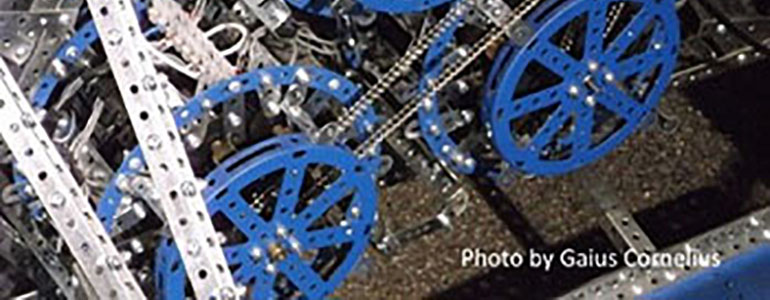It is a widely known principle of systems engineering that the combination of different elements in a system produces results not possible for the elements alone or even in the aggregate. The INCOSE definition follows the general pattern of others in stating “A system is a construct or collection of different elements that together produce results not obtainable by the elements alone.” In other words, simple addition will not account for the product of a system. The results hang on the way the elements relate and interact with each other.
It follows from this concept that the more ways in which the elements can relate and interact the wider the possibilities for system results. At a simple level, think of the erector set from childhood. The more different sizes, shapes, and kinds of pieces you had, the more objects you could construct. Pieces could be combined in a wide variety of ways to make an almost limitless array of creations.
Real erector set enthusiasts sought more pieces and parts and even incorporated objects from their environment that were not a part of the “official” erector set catalog. The more parts the greater the capacity for creativity and results. Unique objects were particularly valuable because they held possibilities that resided nowhere else in the set. We played with wooden spools discarded from the textile factory where our father worked. No one else in our neighborhood had that winding capacity!
The essential characteristic of systems (different elements that together produce results not obtainable by the elements alone) makes the construction of human social systems analogous to working with our old erector sets. The more pieces we have with which to build our human systems the greater the range of results we can achieve. More pieces make our social systems more powerful by expanding our design possibilities.
As we put together organizations to tackle mission challenges, we gain design possibilities in direct proportion to the number and variety of pieces from which we can build. This makes sense in the human realm because we know our thinking is a product of our background and experience leveraged by our natural abilities. All other things being equal (and they are never EXACTLY equal), people from similar backgrounds and experiences will have similar thought patterns and points of view. Conversely, people from different backgrounds and experiences will bring to the table different thought patterns and points of view.
These differing points of view and patterns of thinking enrich the work of the system. In systems speak, they expand the results. This means that teams created from a diverse pool of people will be stronger and have wider capabilities than more uniform groups.
Too often diversity is advocated from the perspective of what the potential group members “deserve.” While this is certainly a legitimate and important perspective, we should not lose sight of the fact that, as systems engineers, we want the gifts diversity brings to our organizational design. Like a bigger erector set with many different pieces, a deep and diverse pool of potential team members offers us stronger solution set.
In practical terms, that means that systems engineers do not simply tolerate diversity or even just welcome it. We covet diversity in the same way we once coveted bigger erector sets with new kinds of pieces. We selfishly seek its possibilities and actively look for ways to leverage the gifts of a diverse pool of team members. Systems engineers who pause to think of diversity in this way can broaden their contribution to their organizations by drawing on those gifts. For them, the issue of diversity transcends politics or justice and becomes one of design excellence.







I enjoyed reading this. Thank you for your thoughts. We need to apply SE to US gov’t!